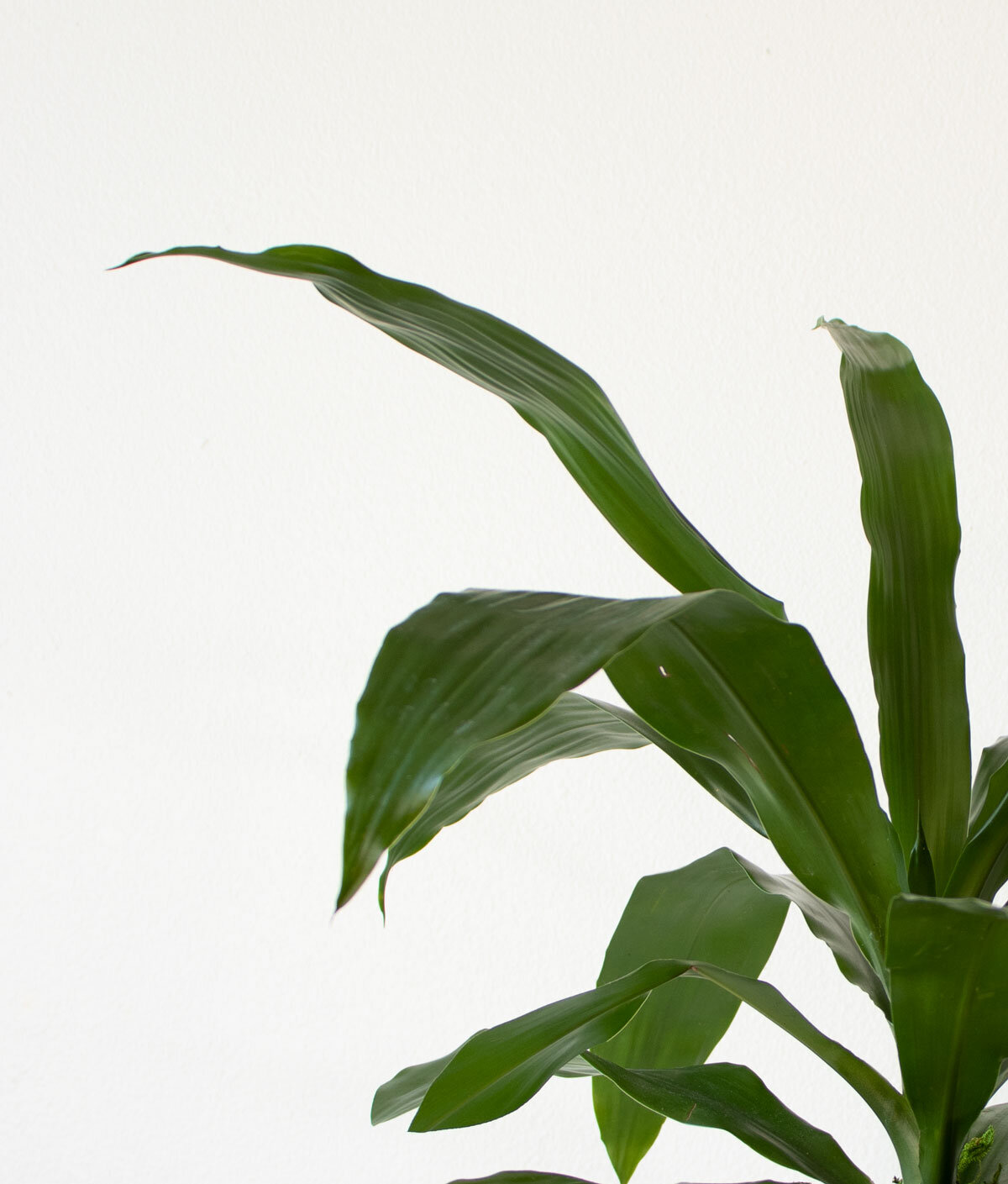We think that the Dracaena Lisa is an elegant hero of the indoor plant game. Its statuesque height and fun, textural foliage belie the fact that the Lisa is actually a truly low-maintenance Dracaena variety, with a tolerance for varied light (from low/medium indirect light to brighter, indirect rays) and a low-key approach to watering. Still, pesky, browning leaf tips can occur with any plant, even the lax Lisa. But don’t worry! It’s also easily resolved. Just read our tips below.
Not Enough Humidity
The Dracaena Lisa is native to tropical, Southeast Africa, and in its natural habitat it enjoys high humidity levels. These are tough to re-create at home, but we have our ways around that. If you notice drying, brown edges and tips on your Dracaena Lisa’s foliage, it is likely due to low humidity in your home. This can be rectified by misting your Dracaena Lisa up to three times a week. Additionally, you’ll want to make sure that your Dracaena Lisa is not placed too closely to appliances that emit dry air: like vents, air conditioners, or even doors that are constantly opened and closed.
How to fix your Dracaena Lisa’s brown and dry leaves
You can rehab your Dracaena Lisa’s leaf tips by trimming brown edges and tips off with clean, sharp scissors or shears. Cut the brown area off of the leaf with the scissors or shears pointed in the leaf’s natural growth direction. Once you have manicured your Dracaena Lisa’s foliage, give it a thorough misting, and it will look brand-new.
Plant Doctor Support
If you follow the steps above and your Dracaena Lisa continues to exhibit a high percentage of dry, browning leaf tips, you can reach out to the Plant Doctor for an assessment and custom assistance. Just log into your Léon & George account, click “Contact Plant Doctor”, and attach photos of your Lisa as a whole, as well as close-ups of the dry and browning foliage areas. The Plant Doctor team will get back to you with an assessment and care instructions within 2-3 business days.
Dracaena Lisa
Our statuesque and low-maintenance wonder plant, with lush, textural foliage and a varied light tolerance. The Dracaena Lisa is an exquisite floor plant for any space.







